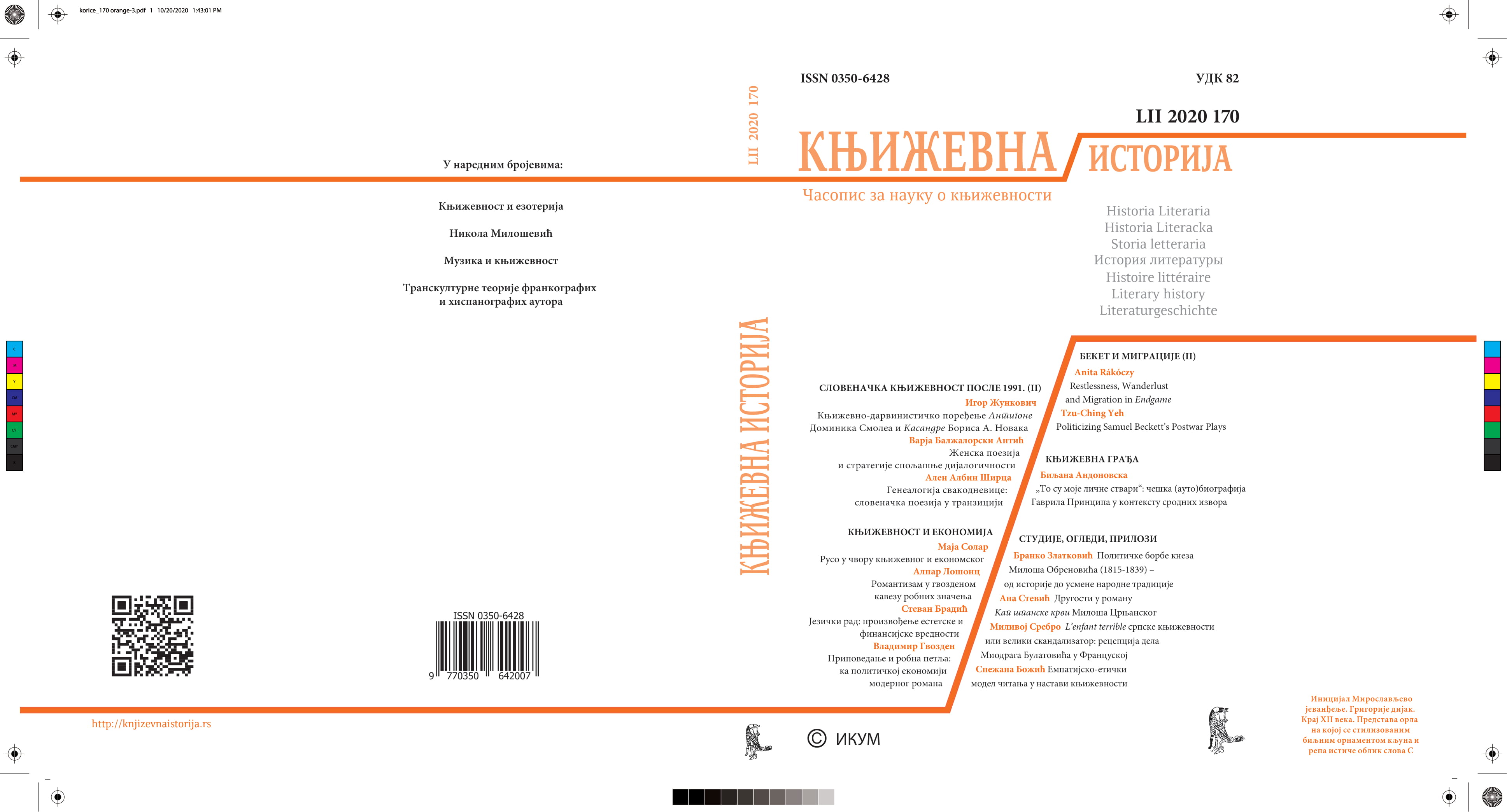Генеалогија свакодневице: словеначка поезија у транзицији
Genealogy of the Everyday: Slovene Poetry in Transition
Author(s): Alen Albin ŠircaSubject(s): Serbian Literature, Slovenian Literature
Published by: Институт за књижевност и уметност
Keywords: Modernism;the everyday;“raw poetry”;beat generation;Tomaž Šalamun;contemporary Slovene poetry;year 1991;
Summary/Abstract: The article attempts to detect and describe the change of the paradigm in contemporary Slovene poetry. If most of the Slovene poetry after the Second World War, or to be more precise, from the late 1950s onwards, was written in the modernist key, with the “serious” existential themes and often dark and hermetic speech as prominent features, we may assume that in the 1980s this kind of poetry was slowly beginning to disintegrate. Although in this decade the so-called neo-avant-garde (or ultramodernist) poetry, which surfaced in the 1960s, became almost obsolete, the poetry of Tomaž Šalamun, the leading voice of the Slovene neo-avant-garde poetry, functioned as some sort of the major catalyst for the new poetry. If we may borrow the distinction between the “cooked” and “raw poetry”, first used by Robert Lowell with regard to the new American poetry of the 1950s and 1960s, we can detect such new poetological tendencies that focus on the mundane themes of the everyday urban life, often written in a spontaneous and sometimes colloquial language, free of formal and metaphysical maneuvers of the so-called “academic”, “cooked”, or “moderate” modernism. To illuminate this poetological transition, the article focuses on the year 1991, which coincides with the disintegration of Yugoslavia and the formation of Slovenia as a new national state. In this year, many of the new young poets started their poetical careers. The brief analysis of the poetical debuts of the poets such as Brane Senegačnik, Vid Snoj, Miklavž Komelj, Jurij Hudolin, Peter Semolič, and Uroš Zupan attempts to demonstrate that most of the poets are still indebted to the modernist paradigm (with Dane Zajc and Niko Grafenauer as its main representatives), but nonetheless, in some cases, the traces of the new, “cooked” urban and narrative poetry can be observed on the margins of these debuts. These elements, however, are the most prominent in the book Sutre, written by Uroš Zupan, who also happens to be most influenced by the poetry of Tomaž Šalmun on the one hand and the American poetry of the beat generation and New York School on the other. These influences were of the utmost importance in the first stage of the new poetic paradigm that at the beginning of the 1990s strove to overcome the modernist literary tradition. The poetry of Uroš Zupan thus paved the way for the new mainstream of the contemporary Slovene poetry that appeared in the new millennium.
Journal: Књижевна историја
- Issue Year: 52/2020
- Issue No: 170
- Page Range: 53-76
- Page Count: 24
- Language: Serbian

